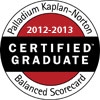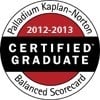As businesses grapple with the complex task of managing costs in a volatile market, accurate and insightful costing methods become critical to making sound strategic decisions. This is especially important when you're up against high-quality, low-cost producers.
Hi, I am Lonnie Ayers, PMP, a Senior SAP Certified Project Manager and Senior SAP SEM (Strategic Enterprise Management) Consultant, as well as Kaplan-Norton Certified Balanced Scorecard Consultant. You can always reach me at Lonnie.Ayers@SAPBWConsulting.com I specialize in helping companies imagine and implement rock-solid, practical business strategies.

One costing method gaining increasing attention is time-driven activity-based costing (TDABC). This approach is lauded for its simplicity, adaptability, and ability to shed light on the actual costs associated with activities, products, and even individual customers. In this article, we will explore the key concepts, benefits, and implementation challenges associated with TDABC.
Get help with implementing your Balanced Scorecard.
What is Time Driven Activity Based Costing?
Time-driven activity-based costing (TDABC) emerged as a more efficient alternative to traditional Activity Based Costing (ABC). Both systems help companies understand the cost of their activities and how those costs are driven by their products, services, and customers. Traditional ABC involved an intensive process of interviewing staff to determine how they allocate their time across various tasks.
This process is expensive, subject to bias, and difficult to maintain over time. TDABC, first introduced in 2004 and published in the Harvard Business Review, offered a simplified, yet still effective solution.
TDABC and The Execution Premium
For the Strategy Focused Organization (SFO), who use the Balanced Scorecard Methodology as part of their Strategy Management System, TDABC plays a critical role in achieving success. It helps you determine your capacity cost rate, and with the right systems, your capacity utilization rate. With a fully developed TDABC system, you can forecast margin and margin % by product or service line. It also plays a key role in conducting your strategy review meeting.
The Execution Premium and the Office of Strategy Management
Before we dive into the nuts'n'bolts of TDABC, it's important to understand the context of this concept, which is a core element of the Balanced Scorecard Methodology. Companies that have successfully setup and used the Balanced Scorecard approach have learned that they need to setup an Office of Strategy Management. While we will cover this subject in detail in a later blog, what's important to know about it is that it is separate organizational unit, with a separate budget, that is known as Strategy Expense or STRATEX, as opposed to OPEX and CAPEX, terms most business leaders are more familiar with.
Who Uses a Dedicated Strategy Management Office?
While there are many examples, one I want to focus on, is the U.S. military, which has an extensive and interlocking group of units whose job it is to look into the future and anticipate threats and develop strategies to meet them.
The Benefits of Using a TDABC System
By estimating just two key parameters – the unit cost of providing resources for activities and the time needed to carry out those activities – companies can build and adapt TDABC models relatively easily. A significant advantage of TDABC is its focus on measuring and managing organizational capacity, leading to more informed decisions regarding resource utilization and allocation.
Traditional ABC systems often rely on a vast number of transaction-based cost drivers, assuming each instance of an activity takes the same time. However, this ignores the real-world variability in process complexity and customer needs. For example, handling a straightforward customer order may take just a few minutes, while resolving a complex complaint could take hours and involve multiple processes.
TDABC explicitly incorporates this variation in time estimates, allowing for more precise cost assignments and a clearer understanding of the actual demands on resources. Beyond cost allocation, TDABC provides valuable insight into operational efficiency and capacity management.
By calculating costs at practical capacity rather than simply relying on actual resource utilization, companies can see where they have idle or unused capacity, enabling more strategic decisions about streamlining processes, reallocating resources, and even exploring new business opportunities. Imagine using TDABC to assess a customer service department, for example. TDABC can pinpoint inefficient processes or high-cost customer segments. This then enables managers to improve service processes or shift their sales efforts toward more profitable clients.
Here are some benefits of Time Based Activity Based Costing (TDABC):
- Simpler to estimate and maintain than traditional ABC.
- Cost Driver Data can be automatically collected from transaction-based systems like ERPs and CRMs.
- Scalable to millions of transactions with quick processing times and real-time reporting.
- Cost estimates can be readily updated to reflect process and resource cost changes.
- Effectively models variability in order and customer behaviors via "time equations".
- Exposes and quantifies the costs of unused resource capacity, highlighting areas for management action.
Steps to Implement Time-Driven Activity-Based Costing (TDABC)
To effectively implement TDABC, businesses should take the following steps:
- Identify Key Processes and Activities: Map out the company's critical operational processes. This step will pinpoint the areas for TDABC analysis and create a foundation for accurately measuring time and costs. Think about customer acquisition or order fulfillment, for example. Those processes likely involve numerous smaller tasks. We want to capture the details.
- Estimate Resource Cost per Unit of Time: Identify and assign costs to groups of resources for those activities. It's critical to remember this figure should include personnel, supervision, information technology, occupancy, etc. Divide the total cost of providing those resources by their total practical capacity, typically measured in time (hours or minutes). Remember that there multiple methods, i.e., employee surveys, to estimate resource cost. This will give you your "unit cost".
- Determine Activity Times: Assign times for each process step in those processes, recognizing variability due to customer or order complexity. Gather accurate estimates of how long each task in your key processes typically takes. If you can’t readily measure time, use a rough estimate based on direct observation or staff input. Even aiming for 5-10% of the actual number can provide valuable insights within 5-10% of the actual number. Don't get bogged down in perfect measurement, aim for 'good enough'.
- Fully Loaded Labor Cost: For your labor rates, you will need to determine your Fully Loaded Cost, which is just way of saying making sure you have accounted for all labor costs, including what cost are loaded onto a resource.
- Calculate Cost Per Activity: Finally, multiply the time to perform an activity by the capacity cost rate to determine the cost of that activity.
Calculate Hours of Resource Time Utilized by Each Product
Time-driven activity-based costing (TDABC) can help you figure out how much time your employees spend on each product or service. This is really helpful for figuring out the real cost of making or delivering something. Let's say you have a team that puts together gift baskets.
You might think it takes the same amount of time to make each basket. But what if some baskets have more items? Or what if some items are harder to wrap? TDABC helps you track that time so you get a more accurate cost.
First, you'd list out every job involved in making the baskets. Then you'd figure out how long each task takes.
For example:
- Gathering the items: 10 minutes per basket
- Arranging the items: 5 minutes per basket
- Wrapping the basket: 7 minutes per basket
- Adding a gift tag: 2 minutes per basket
Once you know how long each task takes, you multiply that by the number of baskets made. This will give you the total time spent on each task. This helps you see where you might be spending too much time and how to make things more efficient.
Remember, implementation varies. Some businesses with straightforward, repetitive activities can implement TDABC with little difficulty. In other industries with intricate processes or extensive manual effort, gathering reliable time data can pose a more significant challenge. To combat this, use technology to your advantage and adjust your implementation strategies accordingly. ERP systems and even tools designed for tracking time in professional services (think time and billing apps) can provide valuable data inputs for your TDABC models.
Additionally, engage teams in the data collection and model development process; this helps improve both accuracy and acceptance your TDABC Study.
Forecasting Resources for Next Period's Operating Plan
You might be thinking about using a Time-Driven Activity-Based Costing (TDABC) model to get a better handle on your next operating plan. It can really help you figure out where your resources are going and how you might need to adjust for what's coming.
Let's say you run a manufacturing plant. You've got a good idea of your production capacity and equipment cost, but you also know that things change. Maybe a big order comes in, or there's a delay in getting materials. TDABC can help you estimate the time needed for each activity in your production process. With this information, you can then figure out how much labor you'll need for each step. If a big order does come in, you can quickly see if you have enough people to handle it or if you'll need to hire temporary help.
But it's not just about labor. TDABC also helps you understand the cost of using different resources, like equipment. This can be really helpful when you're putting together your operating budget. You can use this information to make better decisions about investments and pricing.
Convert the Sales Forecast into Sales and Operating Plan
Think about this for a second. You just finished your company's annual sales forecast. You're probably thinking about how to turn that forecast into an actionable plan.
But there's a problem. Your current system using spreadsheets and manual processes just isn't cutting it anymore. It's time-consuming, prone to errors, and doesn't give you the insights you need. This is where time-driven activity-based costing (TDABC) can help. TDABC is a more accurate and efficient way to figure out the cost of activities. This includes the activities you need to create and sell your products or services.
Although TDABC can be complex to set up, it offers several benefits over traditional costing methods. For example:
- TDABC provides a more accurate view of costs. This is because it considers the actual time it takes to perform an activity. This helps make better decisions about pricing, product mix, and process improvements.
- TDABC can help you identify and eliminate non-value-added activities. These activities add cost without providing any benefit to the customer. By eliminating these activities, you can free up resources and improve your bottom line.
- TDABC can help you improve your sales forecasting. By understanding the cost of different activities, you can develop more accurate forecasts of your sales and marketing expenses.
- You can Create Your Operating Plan. Sales forecasting can be fraught process, full of politics and hidden agendas. But, if you have clearly developed strategy, coupled with accurate TDABC information, you can go from High-Level Sales Forecast Numbers to an Operating Plan. This is how you get everybody on the same team, helping sales win.
Forecast Resource Capacity by Entering Sales and Operating Data into Your TDABC Model
Have you ever wondered how much your products or services really cost? Or maybe you are struggling to figure out where all your team's time goes each week. This is where time-driven activity-based costing (TDABC) can help. Instead of relying on guesswork, TDABC uses data about your business's activities to give you an accurate picture of your costs.
But TDABC is about more than just understanding costs. It's also a powerful tool for forecasting resource capacity. By plugging sales and operating data into your TDABC model, you can start to answer questions like:
- If our sales grow by 10% next quarter, how many more customer service reps will we need?
- If we launch that new product line, will we have enough capacity in our warehouse to handle the extra orders?
This kind of insight is invaluable for making smart decisions about your business. You can start to optimize your workforce, streamline your processes, and make sure you have the right resources in place to hit your goals.
Overcoming Challenges With TDABC
Despite its advantages, TDABC faces criticism for relying heavily on averages. Averaging cost rates and production standards can mask variations due to operational differences. But think of TDABC as a continuously evolving model, not a static snapshot. Implementing continuous improvement methodologies allows the TDABC model to accurately represent changes in processes or customer behaviors. This addresses limitations, improving cost accuracy and enabling more confident decision-making.
Resistance to change is another significant challenge in adopting TDABC. It may be tempting to stick with familiar cost allocation methods, particularly if they appear simpler on the surface. To successfully implement TDABC, build buy-in across departments by communicating its benefits, ensuring thorough training, and providing easy-to-understand reports showcasing its insights. Show team members how TDABC simplifies their tasks while providing more accurate and timely information than outdated approaches.
A successful TDABC system implementation must address employee resistance to change through clear communication, training, and easily understandable reports. Here's how we can break down TDABC even further:
| Term | Definition |
|---|---|
| Time Equation | A formula used to estimate the time required for an activity based on its drivers (e.g., number of items processed, complexity level, average time). |
| Practical Capacity | The maximum amount of work that can be performed by a resource in a given period, considering realistic factors like breaks and downtime. |
| Idle Capacity Cost | The cost associated with unused or underutilized resources, highlighting potential areas for improvement or cost reduction. |
FAQs about time driven activity based costing tdabc
What is the time-driven activity-based costing method TDABC?
The Time Driven Activity Based Costing Method TDABC uses a two-step process for estimating and allocating costs. The first step determines the cost of resources used for business activities. These resources, such as personnel and facilities, are expressed in a cost per unit of time (e.g., per hour, per minute, or even per second).
In the second step, this resource cost per unit of time is then multiplied by the amount of time the resource is utilized to complete each process. This helps provide an accurate picture of true costs. It leads to an accurate total cost computation for each product or service you plan to produce and sell.
What is the difference between ABC and time-driven ABC?
In conventional ABC costing, companies allocate indirect costs based on the activity consumed. With time-driven activity-based costing (TDABC), they instead measure costs as a function of the time needed for any given activity.
What is time-driven based costing?
Time Driven Activity Based Costing (TDABC) is a powerful technique for managing capacity and analyzing process improvement. Unlike conventional activity based costing methods which rely on surveying employee's work time across numerous cost activities, time driven activity based costing assigns an average cost to each activity and calculates the time it takes to carry out a specific task or event. The process-based method calculates how much time employees use to provide goods or services and then uses time equations to factor in operational and customer-related variables. You can then forecast how much it will cost to supply resources in the future to carry out your operational plan.
Is time-driven activity-based costing TDABC good for evaluating employee idle time?
Yes, it absolutely is. Rather than collecting information based on past time estimates through interviews and surveys (which typically only result in the time allocated, leaving the costs for idle time unaccounted for), the time-driven model focuses on the practical capacity of the department. This capacity then factors in costs for unused resource capacity by looking at all related resources. It provides much-needed staff time analysis.
Conclusion
Time-driven activity-based costing (TDABC) represents a shift toward simpler and more insightful cost management. By shifting focus to the time-driven consumption of resources and embracing flexibility and adaptation, TDABC allows businesses to optimize processes, enhance resource allocation, and ultimately make more confident data-driven decisions to propel them forward. However, be aware that TDABC requires an unwavering commitment to data accuracy and ongoing evaluation. Organizations will want to make sure it meets their specific business goals for it to succeed as an integral part of their cost management strategy. But, the insights TDABC reveals about activity costs, profitability drivers, and resource capacity make it a worthy investment for any organization seeking better cost control, enhanced transparency, and a pathway towards operational excellence.
Ready to Upgrade Your Approach to Strategy?
About SAP BW Consulting, Inc.
SAP BW Consulting, Inc. provides comprehensive SAP solutions, including SAP Business Intelligence (BI) and SAP Business Warehouse (BW) consulting, SAP ABAP development, and project management. Our services also include a 1099 Contractor Invoicing and Payment Management System, Salesforce consulting, and Balanced Scorecard consulting for strategic planning. As HubSpot Marketing and Sales Partners, we specialize in Google Ads, Facebook Ads, LinkedIn Ads, Account-Based Marketing, Content Marketing, and Ecommerce solutions, including Shopify.
Ready to optimize your operations and strategy? Book a meeting with us.



